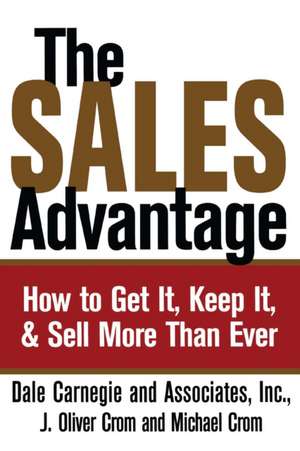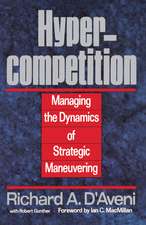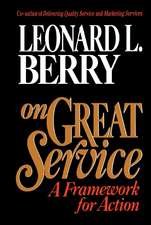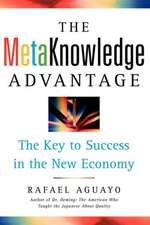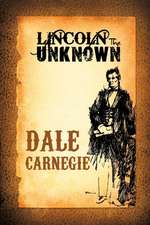The Sales Advantage: How to Get It, Keep It, and Sell More Than Ever: The Sales Advantage
Autor Dale Carnegie, J. Oliver Crom, Michael A. Cromen Limba Engleză Paperback – 15 mar 2013
The two crucial questions most often asked by salespeople are: "How can I close more sales?" and "What can I do to reduce objections?" The answer to both questions is the same: You learn to sell from a buyer's point of view.
Global markets, increased technology, information overload, corporate mergers, and complex products and services have combined to make the buying/selling process more complicated than ever. Salespeople must understand and balance these factors to survive amid a broad spectrum of competition. Moreover, a lot of what the typical old-time salesperson did as recently as ten years ago is now done by e-commerce. The new sales professional has to capture and maintain customers by taking a consultative approach and learning to unearth the four pieces of information critical to buyers, none of which e-commerce alone can yield. "The Sales Advantage" will enable any salesperson to develop long-term customer relationships and help make those customers more successful -- a key competitive advantage. The book includes specific advice for each stage of the eleven-stage selling process, such as:
- How to find prospects from both existing and new accounts
- The importance of doing research before approaching potential customers
- How to determine customers' needs, such as their primary interest (what they want), buying criteria (requirements of the sale), and dominant buying motive (why they want it)
- How to reach the decision makers
- How to sell beyond questions of price
The cutting-edge sales techniques in this book are based on interviews accumulated from the sales experiences of professionals in North America, Europe, Latin America, and Asia. This book, containing more than one hundred examples from successful salespeople representing a wide variety of products and services from around the world, provides practical advice in each chapter to turn real-world challenges into new opportunities.
"The Sales Advantage" is a proven, logical, step-by-step guide from the most recognized name in sales training. It will create mutually beneficial results for salespeople and customers alike.
Preț: 119.70 lei
Nou
22.91€ • 24.87$ • 19.24£
Carte disponibilă
Livrare economică 01-15 aprilie
Specificații
ISBN-10: 0743244680
Pagini: 304
Ilustrații: 10 charts
Dimensiuni: 152 x 229 x 20 mm
Greutate: 0.41 kg
Editura: Free Press
Colecția Free Press
Seria The Sales Advantage
Extras
I don''t think anybody is cut out to be a salesperson or anything else. I think we''ve got to cut ourselves out to be whatever we want to be.
-- Frank Bettger
When it comes to the importance of sales professionals in today''s marketplace, Red Motley sums it up best: "Nothing happens until somebody sells something."
That may seem like a bold statement, but look at it this way: Would the driver for an international freight company have a job if somebody hadn''t sold the products being delivered? Would the construction worker have a job if a site developer hadn''t sold the City Council on the idea of a retail store? Would the aerospace engineer have a job if an account executive hadn''t secured a new contract for commercial jets?
Those are just a few examples of how powerful the sales professional''s role is in driving the world economy. You could say the same thing about virtually any business. In fact, next time you see a truck on the highway, drive past a construction site, or board an airplane, you can smile and think to yourself: "All of this activity around me is happening because of what I do."
To us, that''s exciting. Salespeople are leaders. They truly make things happen. In the minds of customers, they are the face of the company. And those who succeed in building strong business relationships are often paid very well for their efforts.
Despite the impressive rewards that await top sales performers in most industries, many salespeople don''t reach their full potential. Why? Because they don''t understand the fundamental process of buying and selling.
Think about the game of golf: A lot of people play, but very few really know how. We can even draw the same comparison when it comes to photography. Most of us can take pictures, but not many of us have the knowledge or skills to become a published photographer.
Selling is the same way. A lot of people know just enough about selling to make a decent living. But most people don''t know enough about the buying and selling process to truly excel in a sales career.
That''s where the Sales Advantage comes in.
If you''ve been selling for many years, perhaps by instinct rather than structure, this book can help you realize why you''re succeeding. At the same time, it shows you what you''re not doing -- or doing unnecessarily -- that''s keeping you from achieving your full potential. If you''re new to sales, this will give you an essential foundation upon which to build a successful and lucrative sales career.
We''ll share numerous tools that can enhance your relationship with the customer. Will we use all of these tools in every sales discussion? Absolutely not. Every selling situation is different.
Keep in mind that selling is not about manipulating people into buying. It''s about creating an atmosphere that''s conducive to customers making a favorable decision for everyone involved. After all, nobody likes to be sold. But we all like to make good buying decisions. That is why our philosophy for selling is one of Dale Carnegie''s most quoted human relations principles:
Sales Philosophy
"Try honestly to see things from the other person''s point of view."
Sounds like common sense doesn''t it? But common sense is not always common practice. It is often very difficult for salespeople to see things from a buyer''s perspective. We often don''t know their internal policies, politics, challenges, and processes. Many salespeople do not actually use the products and services they sell. In fact, many of the people who influence the buying decision don''t use them either. Purchasing agents are a good example. So, it is critical for us to really understand the perspectives of everyone who has a role in buying.
This philosophy improves the customer''s trust, enhances your reputation, and builds solid customer relationships. Selling according to this philosophy, in conjunction with your personal selling style, will energize you. It will significantly enhance your results and help you feel proud about being a sales professional.
fs20
Most salespeople who are successful ultimately realize that selling is a process. A proven process will give us predictable results. The process outlined below has been proven and can help any salesperson improve results.
The Sales Process
1. New Opportunity
2. Pre-approach
3. Initial Communication
4. Interview
5. Opportunity Analysis
6. Solution Development
7. Solution Presentation
8. Customer Evaluation
9. Negotiation
10. Commitment
11. Follow-up
Successful salespeople tell us that one of the keys to their performance is to follow a repeatable, proven process that gets consistent, positive results. The process outlined here has been tested extensively in a wide variety of products, industries, and cultures. It works. Adjust and adapt the process for your business and you can see the results.
The first three elements of the sales process represent every activity that leads up to that all-important first meeting. We must identify the new opportunity, do our homework through pre-approach, and initiate communication with the prospect before gaining an interview. These are essential activities in the sales process, and they take place in almost every selling situation. If we don''t do these activities effectively, we haven''t really earned the right to take our prospect''s time.
Once we get into the interview, we must know how to build rapport and find out specifically what people need and want. As simple as that sounds, many salespeople don''t understand their customers'' true issues. Why? They don''t know how to ask the right questions.
When they interview customers, they only ask surface-level questions. Consequently, most salespeople don''t uncover the primary interest areas and the Dominant Buying Motive (the emotional reason people buy). These two key pieces of information are critical to developing a truly unique solution that stands apart from the competition.
While the interview is the heart and soul of the sales process, there are many things we have to do after that meeting in order to develop solid customer relationships. So beyond the interview, the selling process represents the activities necessary to turn our prospects into customers. We develop the solution, present it to our prospects, help them evaluate it, gain commitment, and follow up to ensure satisfaction. This part of the sales process is when we truly demonstrate our ability to step into our customers'' worlds. We see things from their point of view and provide solutions that no other salesperson can provide.
Which part of the process is most important? All of them. Look at it this way: If we can''t get the discussion started, how can we present a solution? If we get the first meeting but don''t gather information effectively, how can we be sure we''ve offered the right solution? If we gain commitment but don''t follow up, what are the chances of repeat business? Clearly, if any piece of the process fails, the relationship can collapse. Does every sale go through these phases? Not necessarily. But most of them do. In fact, selling is often repetitive and, in many cases, very predictable.
SOME ELEMENTS OVERLAP
We''ll find that many elements of the sales process overlap into more than one part of the sales discussion. For example, it''s likely that we will use effective questioning techniques several times in our interaction with the customer. And in virtually every part of the process, we''ll find Dale Carnegie''s human relations principles to be a critical element in our success.
THE PROCESS IS PREDICTABLE,
BUT THE SITUATION ISN''T
If we''re selling in an industrial environment with long sales cycles, the pre-approach may take place over several weeks. Not only that, we may have several interviews with a customer before we actually present a solution. On the other hand, in retail situations, there''s very little -- if any -- pre-approach work that can be done. And, in contrast to large equipment sales, we may never have contact with the same customer again beyond the initial meeting.
The point is, we need to recognize that each selling situation is unique. Some salespeople will go through each element of the process several times a day. Others may only go through them a few times a year. The key is to understand how the eleven parts apply in your unique situation, and 0 then act accordingly.
UNDERSTANDING THE WHOLE PROCESS
IS ESSENTIAL FOR SUCCESS
Mastering one or two skills alone won''t generate the same results as understanding and mastering the entire sales process. Even though we want to practice them one step at a time, the power of the Sales Advantage is fully realized when we pull them all together.
Let''s say we''re stranded on a deserted island. The good news: There''s an old airplane on the island that actually flies. The bad news: We have no idea where we are, and no map to help us reach our final destination. Even though we have tools available to get off the island, we don''t know where to go once we get in the air. If we decide to leave, we merely fly on chance and hope for the best. We may eventually get home; we may not.
The same theory applies to selling. Understanding and applying the principles of the entire buying and selling process leaves nothing to chance. Just as we wouldn''t fly an airplane without a flight plan, we shouldn''t try to sell without developing a sales strategy that encompasses every relevant part of the sales process.
Kevin McCloskey, sales representative with Quantum EDP in Toronto, Ontario, Canada, talks about how applying the Sales Advantage principles makes a difference in his selling strategy.
"I had been in sales for three years and never had a template to follow when approaching potential clients," said Kevin. "This unorganized approach quite often left me tongue-tied and unable to communicate effectively to the client what my services are.
"Now that I understand selling as a process, I am able to understand the customer''s true requirements and expectations and then communicate effectively the value-added service I can offer. As a result, my success ratio has increased considerably. I feel I can now control and understand the sales cycle, which inevitably makes me a better, more professional salesperson."
McCloskey''s success speaks for itself: Only six weeks into practicing the Sales Advantage principles, his activity increased so dramatically he had to hire an assistant.
Jack Maloy, northeast district manager with Tetra in Blacksburg, Virginia, says that applying the sales process and relieving "the pressure" on the customer enabled him to get significant additional shelf space for his company''s products. He also says he created a new kind of excitement in a family-owned retail account.
"Treasure Island Aquarium and Pet Center is a family-run business that has three locations. Over time, I had slowly gained their trust in regards to the pet business, but had not had any luck in getting them to implement Tetra''s full ''Nutrition System.'' The customer has always been very cautious in reviewing new products and programs. So I realized that if I continued to ask for the sale on each visit, I might risk losing his trust.
"So instead of thinking about closing, I decided to review the entire sales process. I started by making an unannounced visit to one location, just to stop by and say hello and see how things were going. No selling involved. I began to ask probing questions, knowing the customer''s answer would most likely be positive.
"Because I was listening and was truly interested in his opinion, the customer then became interested in what I had to say, especially in how he could increase sales with current customers. I then provided him with the ''solution'': our full Nutrition System. He had a few objections. But, because I was following the steps of a logical buying process, I was prepared for them and we quickly overcame them. I was able to secure his commitment. Both Treasure Island and Tetra will benefit from this partnership."
Entrepreneur Bruce Hughes, vice president of Repro Tech, Inc., in Wauwatosa, Wisconsin, believes learning the sales process has taught him how to "overcome anything."
"After leaving corporate America, I decided to purchase part ownership in Repro Tech, Inc. Besides me, there was one employee at the time -- my business partner Deborah Bruss. Her expertise was administrative and mine was service and repair. Neither of us had any previous sales experience. Needless to say, I didn''t know that selling had a process to it.
"Since we had very few customers, along with bills to pay and families to support, I needed to have a customer base. How did I plan on getting customers? You got it -- cold calling.
"For the next six months, I experienced something I never had in the past: rejection. As we all know, rejection is part of selling, but at that time, I was not prepared for this new experience. I got to the point where I thought something was wrong with me. I started to fear knocking on doors or picking up the telephone to make appointments. But I kept at it. I kept saying to myself, ''There has got to be a better way.''
"Then, I came across the Sales Advantage. I learned that with proper training and attitude, I could become a very successful salesperson. I began to implement the process. Soon, I started seeing less and less rejection. Learning and understanding the sales process taught me how to overcome any objection, from the initial cold call all the way to getting the order signed.
"Our company continues to grow. We now have several employees and we serve many counties in the area. I have achieved goals that were once only a dream. I do not fear rejection or objections, but often welcome them. I still cold call every day, but now I enjoy it. I have the greatest job in the world. I love being a salesperson!"
Kevin, Jack, and Bruce are just three people out of thousands who have seen a significant boost in their sales results after they began applying the timeless fundamentals of the Sales Advantage.
Here''s the bottom line: Learning and applying the right skills can increase your activity level, decrease your stress level, help you develop stronger customer relationships, and put more money in your pocket. Anybody who really understands how to sell will tell you the same thing.
While the sales environment has changed, the buyer''s mind goes through the same process it always has. Nobody''s going to buy anything unless he or she has a reason to buy. And when that reason becomes significant, we need to be there ready to provide solutions that meet that person''s unique needs and wants.
The Sales Advantage: A Big Impact on Big Challenges
Our tools and principles have specific applications when it comes to the toughest challenges faced by today''s sales professionals. Here are some of the most common challenges identified by our participants and trainers, along with an explanation of how the tools and principles can help us achieve better results.
CHALLENGE: INFORMATION OVERLOAD
In today''s marketplace, customers are inundated with direct mail, telephone solicitation, faxes, voice mail, and e-mail -- everything we can imagine to make that first point of contact. For that reason, customers know more about our products and services than ever before.
The Internet presents other challenges. For example, a customer in the United States can get online and hire a consultant from Europe. Consequently, instead of competing only against local companies, we''re competing against organizations from all over the world.
RESULT
One of the best things that has happened for salespeople is a more informed customer. Why? In most cases, we aren''t spending our valuable time educating our customers. Therefore, we can focus more on the application of our products and services in the customer''s environment rather than simply sharing features and benefits. Today''s informed customer wants to know, "What''s it going to do for me?" The salesperson who understands how to sell at the application level can answer that question effectively.
CHALLENGE: WORKING WITH GATEKEEPERS
Getting past a secretary or receptionist has been a challenge for salespeople from the beginning. But today, the popularity of voice mail brings yet another challenge: getting through to a human being. The combination of human and electronic gatekeepers makes it more difficult than ever to reach our customers.
RESULT
True, customers do not want to be deluged with people trying to sell them goods and services. That''ll never change. But they are willing to talk to people who can offer realistic solutions to the challenges they face.
Sales professionals who apply the Sales Advantage principles find ways to penetrate those walls by talking in terms of the customer''s interest. With that ideal as a foundation, we build strategies to work with gatekeepers. Then, no matter what happens, we implement the strategy we have prepared. We''ll see why voice mail can be a bridge instead of a barrier for sales professionals who know how to use it. After all, instead of risking that our messages be thrown away or written inaccurately, we can now leave our own compelling message, with our own excitement level. We actually have more opportunities than ever before to speak directly to the customer, even if it is through a voice recording.
CHALLENGE: THE
Descriere
Now, for the first time ever, the time-tested, proven techniques perfected by the world-famous Dale Carnegie(R) sales training program are available in book form.
The two crucial questions most often asked by salespeople are: "How can I close more sales?" and "What can I do to reduce objections?" The answer to both questions is the same: You learn to sell from a buyer's point of view.
Global markets, increased technology, information overload, corporate mergers, and complex products and services have combined to make the buying/selling process more complicated than ever. Salespeople must understand and balance these factors to survive amid a broad spectrum of competition. Moreover, a lot of what the typical old-time salesperson did as recently as ten years ago is now done by e-commerce. The new sales professional has to capture and maintain customers by taking a consultative approach and learning to unearth the four pieces of information critical to buyers, none of which e-commerce alone can yield. "The Sales Advantage" will enable any salesperson to develop long-term customer relationships and help make those customers more successful -- a key competitive advantage. The book includes specific advice for each stage of the eleven-stage selling process, such as:
- How to find prospects from both existing and new accounts
- The importance of doing research before approaching potential customers
- How to determine customers' needs, such as their primary interest (what they want), buying criteria (requirements of the sale), and dominant buying motive (why they want it)
- How to reach the decision makers
- How to sell beyond questions of price
The cutting-edge sales techniques in this book are based on interviews accumulated from the sales experiences of professionals in North America, Europe, Latin America, and Asia. This book, containing more than one hundred examples from successful salespeople representing a wide variety of products and services from around the world, provides practical advice in each chapter to turn real-world challenges into new opportunities.
"The Sales Advantage" is a proven, logical, step-by-step guide from the most recognized name in sales training. It will create mutually beneficial results for salespeople and customers alike.
Notă biografică
Michael Crom is a Board Member of Dale Carnegie & Associates and is also Dale Carnegie’s grandson.
